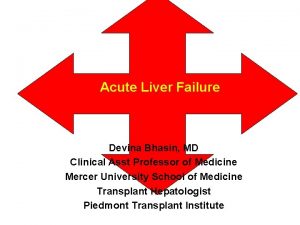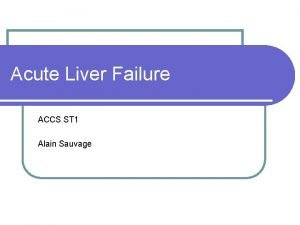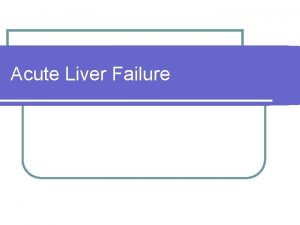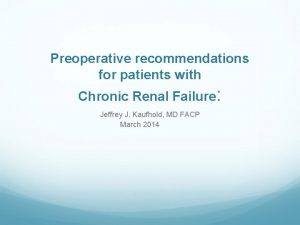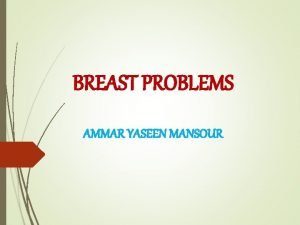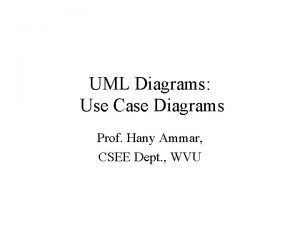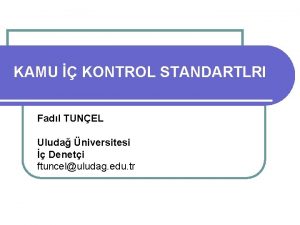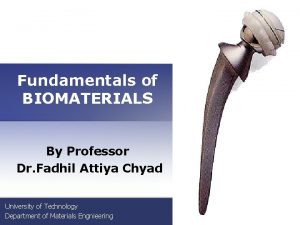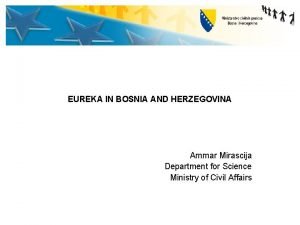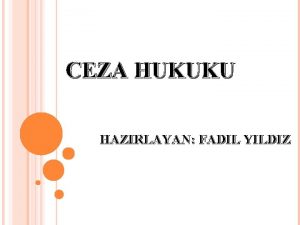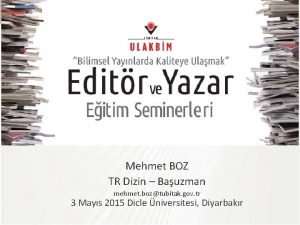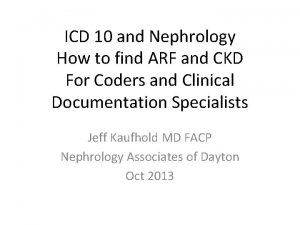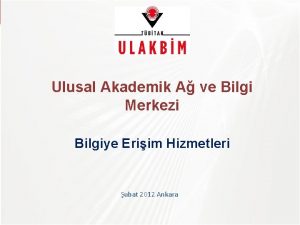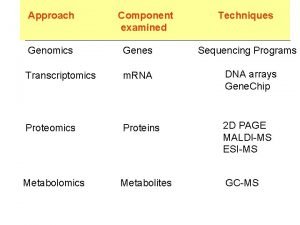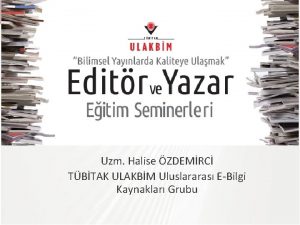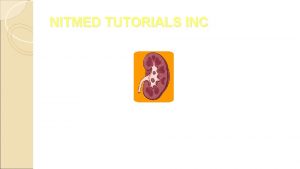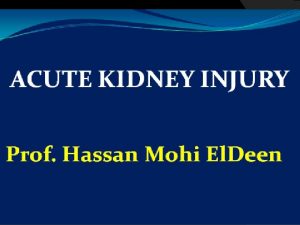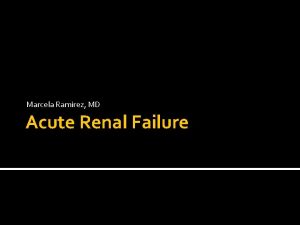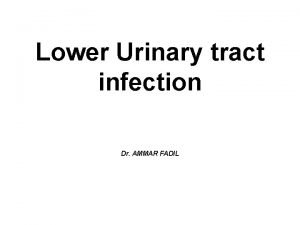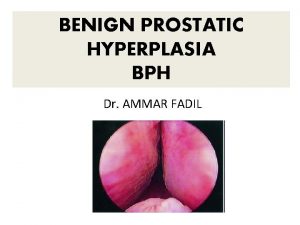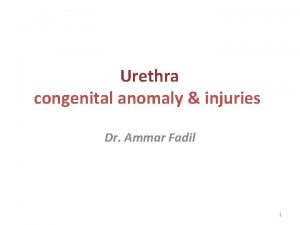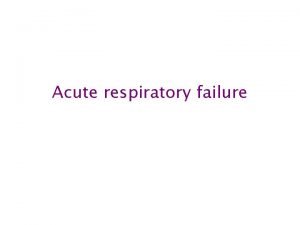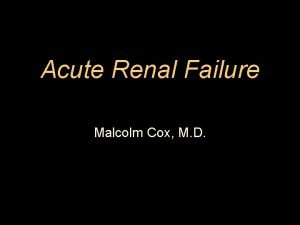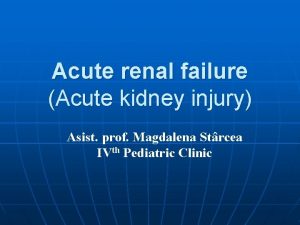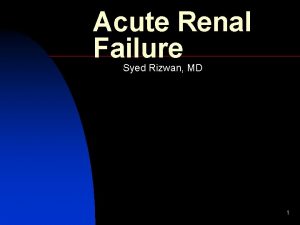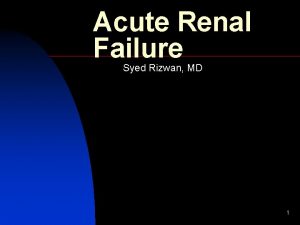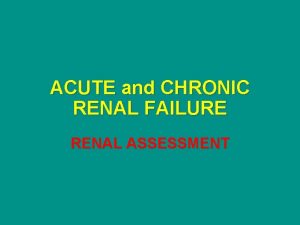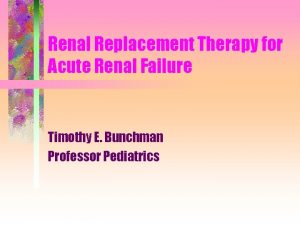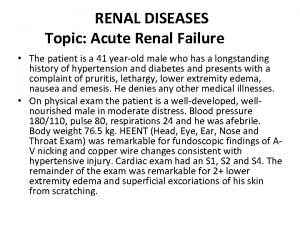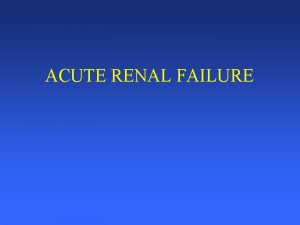Acute Renal Failure ARF Dr Ammar Fadil Renal











































- Slides: 43

Acute Renal Failure ARF Dr. Ammar Fadil

Renal physiology • The kidneys receive 25% of cardiac output (~1300 m. L/min through both kidneys; 650 m. L/min per kidney). 2

ARF is a rapid reduction in renal function, presents as a progressive rise in blood urea and creatinine levels with oliguria. • ARF is a common problem in the practice of medicine & urology. • Acute renal shut down, AKI 3

This abrupt decline in renal function occurs over the course of hours to days and results in a failure to excrete nitrogenous wastes from the plasma or to maintain normal volume and electrolyte homeostasis. Protein • nitrogenous renal 2 - 5% of all patients admitted to hospital will develop ARF 4

• Oliguria urine volume < 400 m. L/24 hours) is the most common form of ARF. • Anuria is complete absence of urine production. • Blood urea 3. 5 -6. 5 mmol /L 20 -40 mg/dl • Serum creatinine 60 -120 Mmol /L 0. 8 -1. 2 mg/dl S. Potassium 3. 5 -5. 5 mmol /L 5

how can you differentiate between anuria and urinary retention? Distended bladder in UR • Palpation, percussion • U/S • Urethral catheterization if no urine comes out so it’s anuria 6

Classification of ARF • Prerenal is the most common cause of ARF • Renal • Post renal (obstructive RF) 7

Prerenal ARF • Hypovolemia – GIT losses prolonged vomiting, diarrhoea & burns • Blood loss – trauma, surgery & blood loss associated from childbirth • Sepsis G –ve septicemia a urinary tract source is a particularly potent. • Cardiogenic shock myocardial infarction, • Hepatorenal syndrome 8

Hepatorenal syndrome • refers to the development of ARF in the patient with advanced hepatic disease, often due to cirrhosis. The reduction in renal perfusion appears to relate to relative splanchnic vasodilatation. 9

• The hallmark of prerenal ARF is its reversibility with treatment of the underlying cause. • correction of the hypovolemia and restoration of renal perfusion usually lead to its resolution • Prolonged renal hypoperfusion and renal ischemia lead to acute tubular necrosis “ATN 10

Renal causes of ARF 1. Renal disease Acute glomeurolnephritis , Acute interstitial nephritis. The findings of proteinuria, hematuria, and red blood cell casts are pathognomonic of GN 2. Drugs aminoglycoside, NSAID, Prolong use of NSAID can cause interstitial nephritis 3. Incompatible blood transfusion 4. Contrast media 5. Myoglobinuria the presence of myoglobin in urine is associated with crush syndrome after major trauma. 11

S& S • patients usually complain of thirst, dizziness in the upright posture (orthostatic dizziness). • O/E decreased skin turgor, collapsed neck veins, dry mucous membranes, tachycardia, oliguria, hypotension and, most important, postural changes in blood pressure. 12

Natural history of ARF 1. The oliguric phase – usually begins less than 24 hours after the incident – May last for 1 - 3 weeks. – expected complications metabolic disorders, gastrointestinal bleeding, & infection might occur. 2. The diuretic phase is characterized by a progressive increase in urine volume, indicates renal recovery. Careful management during this phase is crucial !! fluid and electrolyte monitoring. 3. The recovery phase Renal function returns to near baseline 13

Management of Acute Renal Failure • History: is there obvious prerenal cause; nephrotoxic drugs; & evidence of systemic disease • Assess intravascular volume status by Check pulse, BP, & UOP hourly; • Place urethral catheter; • Daily fluid balance & weight chart; 14

15

• RFT & S. electrolytes • Urinalysis; • Ultrasonography of the kidneys helps to differentiate an obstructive RF, (hydronephrosis) from chronic renal disease. also it differentiate CRF(bilateral small kidneys) from acute renal failure. • KUB to check for calculi; 16

Lines of therapy • • • Fluid challenge Diuretics Nutrition Treatment of infection Dialysis 17

Management • Fluid challenge—An increase in urine output in response to administered fluid challenge is both diagnostic and therapeutic in cases of prerenal failure. • Giving 500 ML over 5 -15 min • A urine volume increase of more than 50 m. L/h is considered a favorable response that need to continue intravenous infusion. 18

Management • Correct volume depletion with intravenous fluid-colloid, saline or blood. • fluid losses must be rapidly corrected to treat oliguria. Inadequate fluid management may cause further renal hemodynamic deterioration and eventual ATN 19

• Stop any nephrotoxic drugs; (aminoglycoside, NSAID, ACE inhibitors) • in the oliguric patient, fluids should be restricted to the total output plus insensible losses. • Fluid Input = UOP+ insensible loss • loop diuretics and mannitol administration have been proved • to minimize the degree of renal injury. • inducing a diuresis to wash out obstructive debris and casts. • increase in urinary volume make it easier to deal with problems of volume overload, hyperkalemia, and metabolic acidosis. • PPI 20

Management • Infection These patients are at increased risk of generalised infection. If antibiotics are required, they should be non-nephrotoxic. • Nutrition is vital caloric intake should be maintained while protein intake is restricted (0. 5 g/kg/day). Carbohydrate intake should be at least 100 g/day to minimize ketosis and endogenous protein catabolism 21

The indications for dialysis • patients with significant uraemic symptoms (vomiting, itching and altered states of consciousness) • persistent hyperkalaemia > 7 mmol/L. • severe metabolic acidosis • Refractory pulmonary edema. • Uremic encephalopathy. 22

Dialysis • peritoneal dialysis can be performed by insertion of a fenestrated catheter under local anaesthesic. This is placed just inferior to the umbilicus in the midline. • Haemodialysis: double lumen catheter is placed over a guidewire into one of the great veins (jugular, subclavian or femoral). 23

Obstructive ARF • Calculi – is the most common cause of acute obstruction. The patient is likely to have bilateral obstruction or obstruction of solitary functioning kidney. • Pelvic malignancy – carcinoma arising from bladder, prostate, cervix or rectum. • pelvic surgery – ligation or crushing of ureters. • Schistosomiasis – may lead to ureteric fibrosis and stenosis • uric acid crystalluria – can develop in patients receiving chemotherapy for leukaemia or 24 lymphoma unless they are given prophylactic treatment with

Obstructive ARF • The level of obstruction may be at the outlet of the bladder, or at the level of the ureters bilaterally. • If the level of obstruction is at the outlet of the bladder, abdominal examination will reveal a percussable & palpably distended bladder. Urine will be present in the bladder on catheterization, and urine output will resume once a catheter has bypassed the obstruction. • The commonest cause is benign prostatic enlargement & less commonly CA prostate. 25

26

27

Obstructive renal failure The treatment of obstruction is drainage, – internally using double J stent – externally using nephrostomy (percutaneous nephrostomy PCN) – Open nephrostomy • Via cystoscopy JJ stent can be placed to relieve obstruction. • If JJ stent cannot be inserted we do PCN 28

29

D. J stent 30

• 2. PCN Under U/S guidance, fine needle is introduced via the flank through the parenchyma to the collecting system of the obstructed kidney. • 3. Open nephrostomy is rare unless the minimally invasive method are not available 31

PCN 32

33

Complications of ARF electrolyte abnormalities • hyperkalemia; • metabolic acidosis; • hyperphosphatemia; • hypocalcemia; • These problems may be minimized by the a low-potassium, low-protein diet. 34

Hyperkalemia is the most common and dangerous!!! electrolyte abnormality in the ARF setting. If S. K> 6 m. Eq/L, ECG should be performed the earliest changes are peaked T waves. 35

1. Stabilizing the cardiac conduction system with IV calcium e. g 10 ml 10% calcium gluconate over 10 minute, this is cardioprotective 2. Intravenous insulin+glucose, insulin stimulates intracellular uptake of K or 3. IV sodium bicarbonate. 4. Elimination of potassium from the body by way of the gastrointestinal tract with a cationic binding resin (Kayexalate). 5. If severe hyperkalemia exists, haemodialysis may be required. 36

To differentiate ARF from CRF • shrunken kidneys on ultrasound, normochromic anaemia and • hypertension • hypocalcemia • suggest CRF even if a previous Hx of renal failure is not available 37

U/S 38

39

40

Q • 45 year old female presented with oliguria , she has bilateral hydronephrosis , on history taking revealed she had C. A cervix. • Mention the ways to relieve her condition. 41

Anuria Vs UR Hx & Ex catheterization UR BOO empty bld U/S 42

U/S HN Obstru RF PCN Ureteric stent small Kid CRF No Hn norm size ARF 43
 Urinalysis
Urinalysis Ira pré renal renal e pós renal
Ira pré renal renal e pós renal Diagnostico etiologico
Diagnostico etiologico Acute liver failure criteria
Acute liver failure criteria Hepatic encephalopathy stages
Hepatic encephalopathy stages Acute vs chronic heart failure
Acute vs chronic heart failure Liver failure criteria
Liver failure criteria Acute brain failure
Acute brain failure Capture beat
Capture beat Failure to pace
Failure to pace Brittle fracture vs ductile fracture
Brittle fracture vs ductile fracture Azotemia
Azotemia Renal failure
Renal failure Earthy look in chronic renal failure
Earthy look in chronic renal failure Cortical and juxtamedullary nephrons difference
Cortical and juxtamedullary nephrons difference Hany ammar
Hany ammar Zookeeper ammar
Zookeeper ammar Brahim el fadil
Brahim el fadil Kevin gimpel
Kevin gimpel Ammar yaseen
Ammar yaseen Hany ammar
Hany ammar How do you spell colleague
How do you spell colleague Brahim el fadil
Brahim el fadil Fadıl tunçel
Fadıl tunçel Dr ammar attiya
Dr ammar attiya Ammar mirascija
Ammar mirascija Wafaa pronunciation
Wafaa pronunciation Hany ammar
Hany ammar Fadıl yıldız
Fadıl yıldız Guidage hélicoidal
Guidage hélicoidal Brahim el fadil
Brahim el fadil Fergani
Fergani Cahit arf'ın matematiğe katkıları
Cahit arf'ın matematiğe katkıları Tubitak
Tubitak Icd 10 arf
Icd 10 arf Ulakbim belge sağlama
Ulakbim belge sağlama Cahit arf proje ödevi
Cahit arf proje ödevi Arf-gap
Arf-gap Ulakbim ubyt
Ulakbim ubyt Acute triangle
Acute triangle Acute ischemic stroke algorithm
Acute ischemic stroke algorithm Dehydration gastritis
Dehydration gastritis Global registry of acute coronary events
Global registry of acute coronary events Acute pseudomembranous candidiasis
Acute pseudomembranous candidiasis



